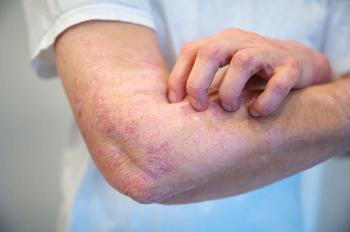
Pigmented Basal Cell Carcinoma on Cheek of a Homosexual Man
“Stippled” pigment is highly typical of a pigmented basal cell carcinoma. Diagnostic contenders include atypical seborrheic keratosis and superficial spreading melanoma.
A 69-year-old homosexual man complained about an asymptomatic “dark spot” on his cheek. The lesion had been present at least 6 months. His medical history included rare actinic keratoses.
Key points: Physical examination disclosed a solitary, nearly flat patch, below and lateral to the right eye. The abnormal-appearing area was characterized by small areas of intense pigment. This is often referred to as “stippled” pigment and is very typical of a pigmented basal cell carcinoma. However, a biopsy was done to confirm this diagnosis and to rule out an atypical seborrheic keratosis or a superficial spreading melanoma.
Treatment: Due to the small size and the patient’s lack of cosmetic concerns, the lesion was vigorously subjected to 2 applications of curettage followed by electrodesiccation.
Note: This type of lesion may occur at any anatomical site, and biopsy confirmation is required.
Newsletter
Enhance your clinical practice with the Patient Care newsletter, offering the latest evidence-based guidelines, diagnostic insights, and treatment strategies for primary care physicians.






























































































































































































































































































